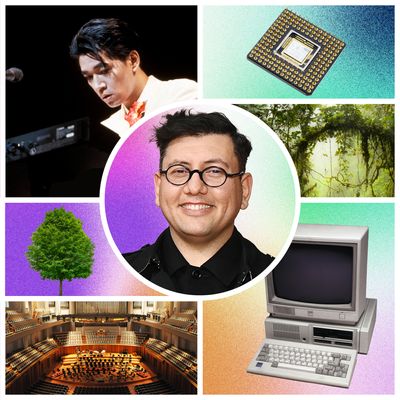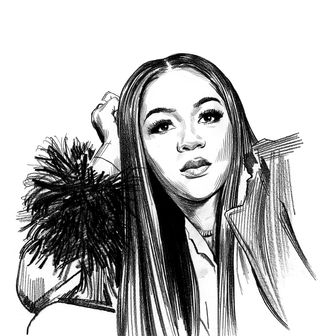
Artist Refik Anadol is relieved that the world is finally speaking his language: AI. After working with AI for seven years — creating art that is a blend of data research and AI merged with high resolution “paintings” — people can finally understand a bit more about his art without him having to over explain himself. His latest muse? Bulgari’s Serpenti snake logo.
To celebrate its 75th year, the Italian house collaborated with global artists to highlight the snake in a series of curations as part of a New York exhibition, “Serpenti 75 Years of Infinite Tales,” at 70 Gansevoort Street. For Anadol, the craftsmanship of the Serpenti is what inspired him most when approaching the project. “When I look closely at Serpenti’s engineering, how each node connects, they’re like sculptures. For me as an artist in this journey, it’s similar thinking: How can I preserve my craftsmanship while innovating, creating new work and while saying new things, but not losing the quality of imagination?” Anadol tells the Cut. The exhibition opened June 8 and will go until July 16. Anadol has already set off to Art Basel in Switzerland this week, where he’s unveiling his next project. But first, he let us in on his taste.
What’s your favorite piece of art you own?
My favorite is a CPU chip-design document from 1985, the year I was born. It’s a beautiful graphical print; I love computers, and it’s the year one of the CPU designs came out. It’s normally behind me in all of my talks I do at home; I enjoy it being my physical background.
What’s the best advice you’ve received?
One of my mentors told me, “You have to define what success is specifically for you; it’ll help you so much.”
How about the worst advice?
Slow down. Slowing down to me is not something that applies when you are pushing your dreams. I don’t believe there is slow or fast; I don’t know what that means. I believe in pushing boundaries and following the journey, my personal journey. I don’t believe you can be slow and push the boundaries. They don’t have correlations. I look at slowing down as giving up on me.
How about when you’re alone — what music or playlists are you listening to?
Since I’m in nature as much as I can be, I love to hear the rawness of nature; those sounds are what I’m super inspired by. I love classical music, too. I have much respect for and appreciation for deep classical music for many years. I don’t like words, I just want to hear music when I’m alone. Especially when I’m working, I only want sounds because it evokes a very special feeling, the orchestra symphonies are inspiring to me, words are very distracting. When I’m deep in a song, it feels ritualistic. I love Ryuichi Sakamoto; he’s one of the most important composers in Japan and in the world. I’ve been listening to him a lot recently.
Since you love raw nature sounds so much, what parks do you frequent to listen to them?
Sometimes I walk around my studio in the L.A. River because the area is a sea of nature and I don’t have to go too far, but I wish I could go to more places like national parks. I’ve visited all of them in California, but I’ve been researching rainforests across the world in the Amazon. My next project is called Data Land, so we’re deeply researching rainforests. I’m headed to Indonesia soon. It’s just beautiful to be immersed in nature, any form of it, I have no bias.
This interview has been edited and condensed for clarity.




